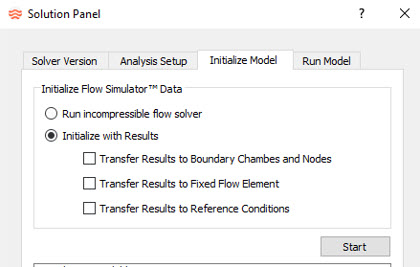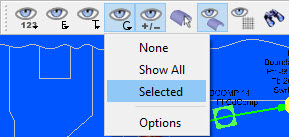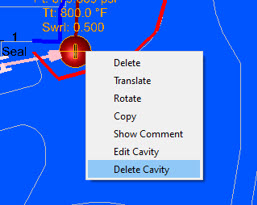Altair Flow Simulator 2021.1 Release Notes
New Features & Enhancements
GUI
- Added ability to initialize a model using the chamber information from a
results file (*.res). The pressure and temperature of internal chambers will
be set from the results file. Optional capability to transfer results to the
boundary chambers, fixed flow elements, and reference conditions (rotor
speeds and cycle flow).

- New text display control added for chambers, elements, and so on.

- Implemented GUI inputs for new solver features: axial compressor and turbine efficiency, axial compressor and turbine choking and surge flow, vermes seal groove options, generic heat exchanger performance.
- Added input for standard compressible tube “Duct Shape”.
- Provided ability to delete a cavity from the menu displayed with Right Mouse
Click on selected chamber.

- The “Auto Fill” option for cavity flows will now use the vermes seal radius.
Solver
- Improved .xml results file output. Including: Add units information, add element type, add vermes seal pocket information, remove extra spaces, use scientific notation format.
- Added swirl, radius, RPM and chamber number to existing UDE_GET_BOUNDARY_CONDITION function. See myelib_param_mod.f90 for valid parameter names.
- Created new UDE function for general fluid properties retrieval: UDE_GET_FLUID_PROP.
- Enhanced velocity components, swirl and velocity calculation method to SET_UDE_SOLVED_VALUE. See myelib_param_mod.f90 for valid parameter names.
- Added items to controller including gauge compressible tube fluid properties for each station; gauge vermes seal groove information; gauge compressor corrected flow, corrected speed, polytropic efficiency; manipulate compressor polytropic efficiency; gauge tank height.
- Implemented vermes seal groove input information and add a correlation based on Ref: Zimmermann, H., Wolf, K.H., "Air System Correlations Part 1: Labyrinth Seals", ASME 98-GT-206, Figure 7, Re>5000, GRV_WDTH/WT > 2, Tooth not in groove. This groove multiplier can also be changed using a controller with customer correlations.
- Provided options to axial compressor and turbine including: Efficiency vs Corr. Flow Rate vs Corr. Speed; Efficiency vs Press. Ratio vs Corr. Speed; Surge and choke limits based on mass flow.
- Implemented custom correlations capability in FORTRAN and Python for Tube (compressible, incompressible, and advanced orifice) heat transfer coefficients, HTC inlet multiplier, and friction factor; HTC for thermal convectors; Cavity surface friction.
- Improved new generic heat exchanger performance options based on “Hs” parameter.
Known Issues
The following known issues will be addressed in a future release as we continuously improve the performance of the software:
- Import/Export is not updated for new elements/components & new properties for existing elements/components.
Resolved Issues
GUI
- Fixed problem with plotting results on a thermal network when the results file is in SI units.
- Fixed problem with superscript symbols for non-English language (especially Chinese).
- Fixed crash when reading results files.
- Fixed problem of saving IGES file in the wrong units.
- Removed “Fixed” keyword from Boundary chamber display.
- Fixed cavity point resizing problem and improved with slider.

- Fixed problem with “Number of Streams” when plotting Total Flow in the color contour post-processing tool.
- Fixed problem with Advanced Orifice element not saving the laminar heat transfer coefficient (HTC) relation.
Solver
- Fix some xml results file issues with units and ordering.
- Vermes seal now using HCSIZE and checking against SEAT input. FS GUI has also fixed bug related to this.
- Controller was using compressible tube Dh and area in reversed order.
- Fixed Water-hammer time-stepping based on wavespeed.
- Fix problem if hot and cold side connections were flipped for heat exchanger.
- Fixed valve vena-contracta velocity output in .res file.
- Fixed combustion element Rayleigh flow problem for temperature decrease through element.